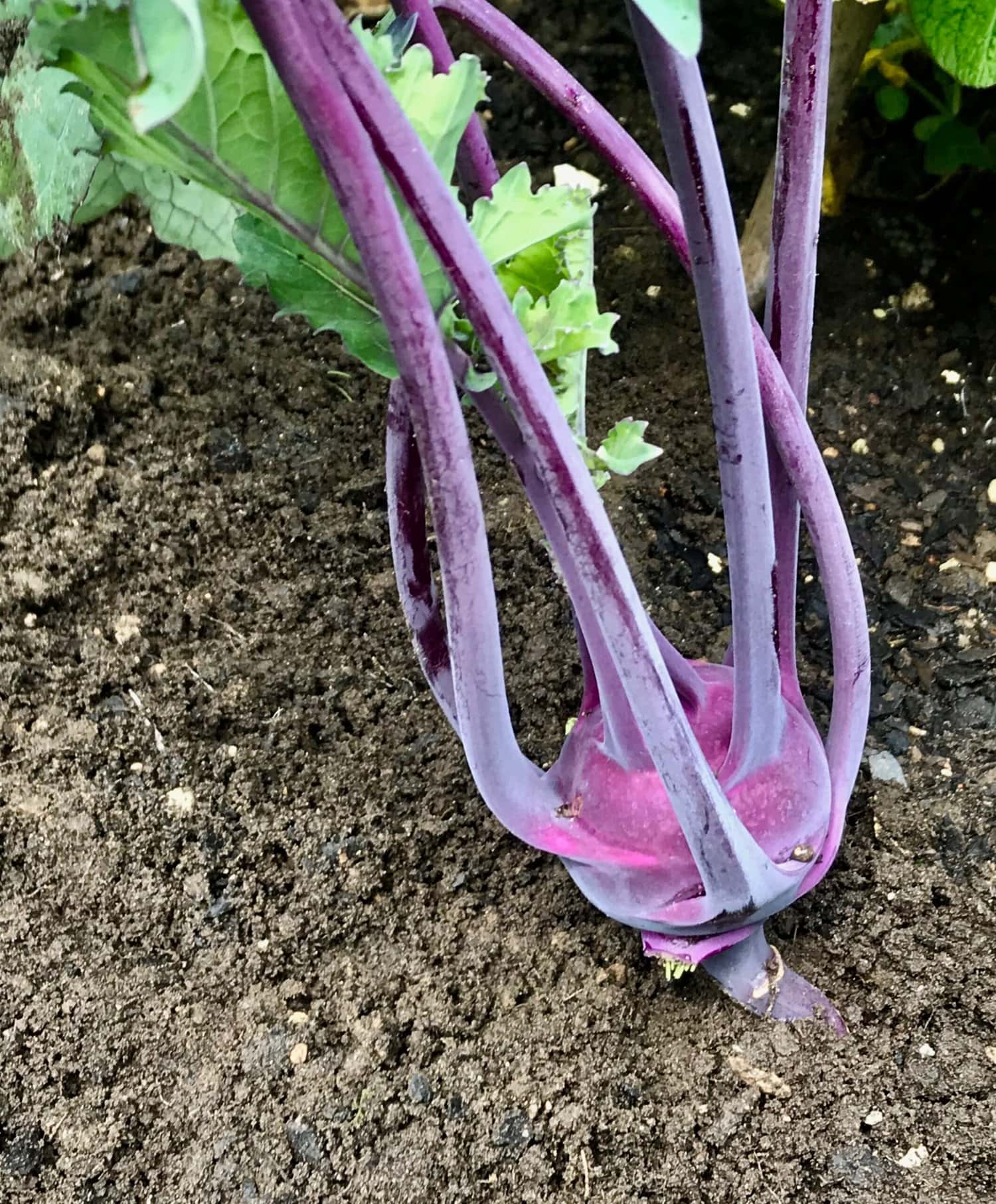How to grow kohlrabi

A cabbage relative appears to be on the comeback trail.
WORDS & PHOTOS Gillian Vine
Kohlrabi is, let’s face it, something of an aberration. No other member of the cabbage family grows a turnip-like globe on its stem instead of underground.
It doesn’t look like an ordinary cabbage (Brassica oleracea) but kohlrabi (or kohl rabi) is one of six forms of B. oleracea, along with cabbage, cauliflower, broccoli and kale. Like them, kohlrabi possibly first popped up as a ‘sport’ or mutant form and then the new vegetable was nurtured and grown on.
EUROPEAN IMPORT
About 500 years ago, the Germans gave the cabbage the apt name kohlrabi, meaning ‘cabbage turnip’. Kohlrabi was brought to New Zealand in the early days of European settlement. There is a record of it winning a prize at a Wellington horticultural show in 1842.
Its main use was not in the vegetable garden, though. Instead it was grown as a fodder crop for cattle, sheep, horses and even pigs, with ‘Early Green Vienna’ a recommended variety at the time. It appeared to be most popular with farmers in Taranaki, the Waikato, North Otago and South Canterbury.
You can’t blame people for turning up their noses. Few would want to eat stock food advertised in 1878 amongst “turnips (all the best sorts), swedes, kohlrabi, gorse, tares [Lolium temulentum] and sheep’s parsley [probably flat-leafed (Petroselinum crispum)]”. Incidentally, gorse was declared a noxious weed in 1900.
LOSING BATTLE
Around 1920, writers began to describe the difference between fodder and garden kohlrabi. As the varieties were the same, the coarser nature of paddock crops was probably because the latter were left in the ground to grow as big as possible. Table kohlrabi – watered while growing, then harvested when 5–8cm in diameter – was naturally more tender.
By 1940, efforts to promote kohlrabi generally had failed, the vegetable falling into the ‘unusual’ category. As it was considered inferior to the white turnip, especially ‘Snowball’, kohlrabi seemed doomed.
In recent times, as biodiversity issues have caused concern, attention has turned to older vegetable varieties. At the same time, a generation of younger chefs has expanded its vegetable repertoire, not just in restaurants but at home. Kohlrabi is out there again.
IN THE KITCHEN
Kohlrabi must be the most versatile of the six vegetables in the B. oleracea group. Once the thick outer skin is peeled off, it can be eaten raw in slaws and salads – apple with kohlrabi is yummy – roasted, steamed or boiled and served in white sauce, added to soups or stir-fries, and even used to make gluten-free pasta. Substitute grated kohlrabi for potatoes in fritters or bake it au gratin topped with breadcrumbs and cheese, and you’ll wonder why you hadn’t used this vegetable before.
GROWING KOHLRABI
Mainly labelled a cool-weather vegetable, kohlrabi is surprisingly tolerant of hot, dry weather if it is grown in the shadiest part of the garden and kept moist so the globes don’t get stringy and bitter.
Because it is hardy, seed sown in autumn will give crops that will stand over winter.
There are purple- and green-skinned varieties, grown in exactly the same way.
As with all brassicas, the soil should be rich and fairly firm. Never grow kohlrabi in the ground where the previous crop was another brassica (such as cabbage or cauliflower), as that increases the risk of clubroot. This is a thoroughly nasty fungal disease, which can wipe out your crop and whose spores can lie dormant in the soil for years waiting for a chance to attack. Some powerful chemicals will control clubroot, but simple crop rotation is the kinder (and free) alternative.
Sow kohlrabi in rows where the crop is to mature. They germinate in 7–10 days. Thin when seedlings are 3–5cm tall to about 15cm apart. Seedlings can be transplanted but, in my experience, don’t do as well. Use the thinnings in a stir-fry instead.
Keep plants well-watered but not waterlogged. They will be ready to harvest two or three months later.
Aphids and cabbage white butterflies are the main pests.
WHEN TO SOW
Sow in spring, summer or autumn.
VARIETIES
Green: ‘Early White Vienna’, ‘Grand Duke’, ‘Green Duke’, ‘Fonda F1’, ‘Neptune’, ‘Pluto’
Purple: ‘Purple Vienna’ (sometimes sold as ‘Early Purple Vienna’), ‘Purple Azure’
TIME TO HARVEST
From late spring to winter when golf-ball size.
